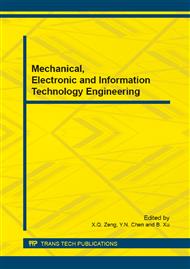p.99
p.107
p.115
p.121
p.133
p.137
p.142
p.146
p.150
Co-Simulation of an Integrated Braking System Based on Dual-Motor Drive by Using ADAMS and SIMULINK
Abstract:
To improve the design efficiency of the Integrated braking system (IBS) based on dual-motor drive, the paper established a co-simulation model in ADAMS and Simulink. The 3D mechanical model which was set up in SolidWorks had been imported into the ADAMS software to build the retarding mechanism model, and build the motor model in Simulink, the established model was used to co-simulate the brake pressure regulation process. The results show, the system has a fast pressure response characteristics, and the single wheel cylinder pressure regulation frequency can reach 50Hz. The paper provides an effective method to design an IBS prototype.
Info:
Periodical:
Pages:
133-136
Citation:
Online since:
March 2015
Authors:
Keywords:
Price:
Сopyright:
© 2015 Trans Tech Publications Ltd. All Rights Reserved
Share:
Citation:


